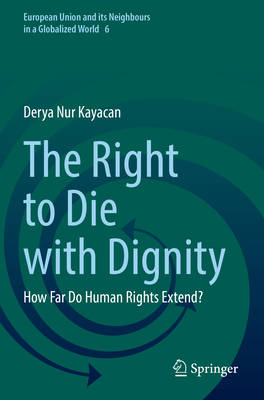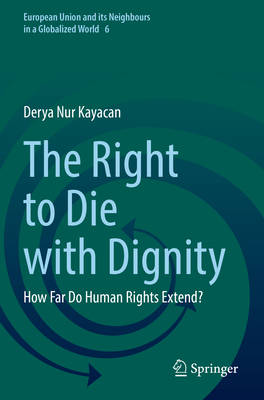
- Afhalen na 1 uur in een winkel met voorraad
- Gratis thuislevering in België vanaf € 30
- Ruim aanbod met 7 miljoen producten
- Afhalen na 1 uur in een winkel met voorraad
- Gratis thuislevering in België vanaf € 30
- Ruim aanbod met 7 miljoen producten
Omschrijving
"Can I choose to die?" As the number of requests for euthanasia and physician-assisted suicide continues to rise, human rights law faces a new conflict: the right to die vs. the right to life...
The right to die or, in other words, 'the right to choose the time and manner of one's own death' is a question of personal autonomy and its limits. This book provides a comprehensive understanding of the right to die and sheds light on its possible future under the European Convention on Human Rights. After setting a clear framework by defining the key terminology, the book takes a two-part approach to achieving its aim.
The first part focuses on the right to die in practice by examining selected jurisdictions. Switzerland, which is famous for its assisted suicide organizations, and the Netherlands, which was the first country to legalize euthanasia, are examined in detail. Belgium, Germany, the United Kingdom, and -as an exception to the Convention perspective - Canadaare also included. While this examination offers a better understanding of what the right to die looks like in practice, it also provides insights on the slippery slope argument, which serves as a counterweight to personal autonomy, without making a definitive statement on its validity. This part also illustrates the different paths that led or did not lead to the right to die in practice.
The second part is an analysis of the European Court of Human Rights case law on the right to die. The Court has made important statements in only very cases, while its caution when approaching such a delicate and controversial topic among its 47 members is understandably emphasized. This analysis of the Court's approach to the balancing of personal autonomy against other interests allows us to take a look back at the practice in more permissive jurisdictions through the lens of the Convention.
Taken together, the book's two parts provide valuable lessons for countries that decideto practice assisted dying, which are outlined in the conclusion. In addition, given that a purely legal approach can only offer a partial picture, the book argues that an interdisciplinary approach would be much more favorable in terms of providing the necessary basis for the right to die debate.
Specificaties
Betrokkenen
- Auteur(s):
- Uitgeverij:
Inhoud
- Aantal bladzijden:
- 231
- Taal:
- Engels
- Reeks:
- Reeksnummer:
- nr. 6
Eigenschappen
- Productcode (EAN):
- 9783031045189
- Verschijningsdatum:
- 22/06/2023
- Uitvoering:
- Paperback
- Formaat:
- Trade paperback (VS)
- Afmetingen:
- 156 mm x 234 mm
- Gewicht:
- 353 g

Alleen bij Standaard Boekhandel
Beoordelingen
We publiceren alleen reviews die voldoen aan de voorwaarden voor reviews. Bekijk onze voorwaarden voor reviews.











